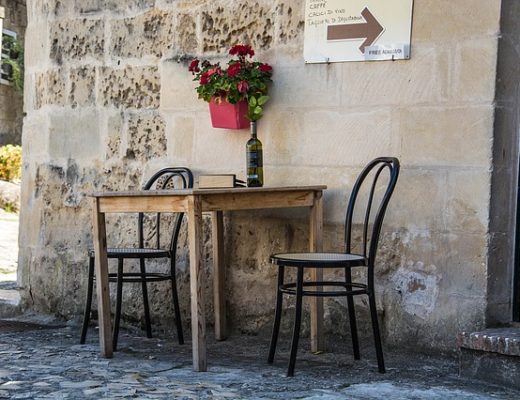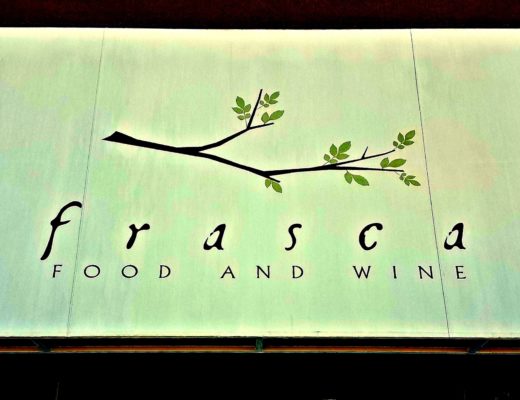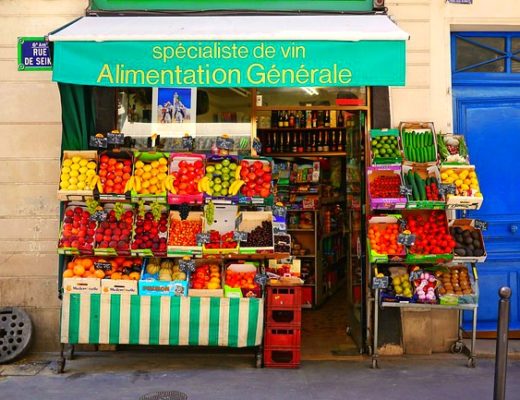While riding out the recent stay at home orders here in Denver, I was going through some pictures on my phone taken before the sweeping measures of the Coronavirus. I came across a fun snapshot of Heidi Schröck and myself during a lunch at Matsuhisa hosted by Maverick Distributing. I was reminded of the simple pleasures of going to a restaurant, meeting great company, and pairing exceptional food and wine. Let’s take a journey back in time to remind us of what we need to get back to in the wine world.
The outstanding wines from Heidi Schröck mirror her dynamic presence – genuine & bright, her enthusiasm was contagious as she discussed the nuances of the 10 hectares of grapes that she cultivates for Weissburgunder, Furmint, Muskateller, Blaufränkisch, and Zweigelt. Her production is around 70% white wine and 30% red wine.
So, what are those crazy Austrian varietals? Here’s the rundown:
- Weissburgunder = White Wine = Pinot Blanc
- Furmint = White Wine = A Hungarian grape varietal (also grown in neighboring Austria) that can range from dry to sweet. In the case of the Heidi Schröck tasting, it was the drier style.
- Muskateller = White Wine = Represents the Muscat varietal family throughout Austria.
- Blaufränkish = Red Wine = Known as Lemberger here in the States, but is native to Austria and Hungary.
- Zwiegelt = Red Wine = The most popular and widespread red varietal in Austria.
A parade of wines consisting of these varietals were soon poured and paired with fresh seafood, sushi, and satay. Below is a quick catalogue of what was on offer:
Weissburgunder (Pinot Blanc), 2018 / Paired with Spicy Shrimp on a Bed of Mixed Greens:
- Tasting notes on wine – White florals, perfume, light petrol, and lovely aromatics. Coming from 4 vineyards that are 10-45 years old. Ripe stone fruit that is full on the palate with the beautiful lifted acidity that is typical of Pinot Blanc.
- Tasting notes with food – Paired nicely with the spicy shrimp, but most notably with the salad greens (as a side note, salad greens are somewhat hard to pair with wine. When you find one that works, it’s best to stick with it).
Furmint (In this case, a dry white wine), 2018 / Paired with Spicy Shrimp on a Bed of Mixed Greens:
- Tasting notes on wine – These grapes are well cultivated with a favorable Southeast exposure. The grapes themselves have a velvety underskin that contributes to the gorgeous, musky apple and pear note. This was a very ripe vintage that also left expressions of chamomile, quince, dried honey, and minerality on the palate.
- Tasting notes with food – Paired phenomenally with the spicy shrimp. Fantastic balance.
Muskateller ‘Sauvage’, (Muscat), 2018 / Paired with Spicy Shrimp on a Bed of Mixed Greens:
- Tasting notes on wine – This is an early ripened grape which is the first to be picked. On the nose, this smells like a rich and spicy Viognier reminiscent of the Northern Rhone. Minerals, spice, and acidity are all intertwined in the most jovial of ways.
- Tasting notes with food – The mineral and bright tones help give both the food and the wine a fantastic amount of spice. Great to serve with dishes that have a good amount of heat.
Phoenix aus der Flasche (A white blend consisting of Chardonnay, Pinot Blanc, and Welschriesling), 2018 / Paired with Salmon & an assortment of fresh Sushi:
- Tasting notes on wine – Even more perfumed and aromatic than the white wines listed above. Earthy aromas exude from the glass that translate to lush, round and spicy notes on the palate.
- Tasting notes with food – Very versatile during the pairing, this paired well with the leftover spicy shrimp, as well as the Salmon. There was more than adequate lift, spice, and richness of the wine that rounded out the fresh and fatty cut of the fish.

Rosé ‘Biscaya’ (A rosé made from Blaufränkish, Zweigelt, Lagrein, Teroldego, Shiraz, Petite Verdot, Merlot, and Cabernet Sauvignon), 2018 / Paired with Salmon & an assortment of fresh Sushi:
- Tasting notes on wine – Nice earthy tone that’s delicate yet complex with some good weight and an elegant finish. Red fruit and herbs play on the nose and the palate. This is direct press Rosé. Heidi makes it just like her Father did.
- Tasting notes with food – Gorgeous with the Salmon Sushi. Complete neutrality on the palate. Exactly what a food and wine pairing should be, bringing out the best elements of the food and wine while not overwhelming either.
Blaufränkish ‘Kulm’ (A red wine know as Lemberger in the US), 2018 / Paired with Salmon & an assortment of fresh Sushi:
- Tasting notes on wine – A true celebration of the Schröck Family women. Heidi shared a moving tribute to her three Great Aunts (Emma, Millie, & Irma) who were the driving force of this wine. This grape thrives in the Austrian climate and yields flavors of black cherry, black pepper, almonds, and marzipan.
- Tasting notes with food – After a toast to the Aunties, we confirmed that certain red wines do, in fact, go with Sushi. We all enjoyed the appropriate acidity and light, dusty tannins on the palate that provided the depth to accompany a Sushi platter.
Dessert Wine – Furmint Spätlese, (Furmint vinified in the Spätlese {semi-sweet} style), 2018 / Paired with Spicy Chicken Satay:
- Tasting notes on wine – The vineyards for the dessert wines are directly adjacent to a lake that provides the necessary humidity and fog in the fall, which is perfect for the late harvests. This provides protected conditions for the fungus, which in turn allows the grapes to reach their optimal sweetness. At a level of 10% botrytis and 55 grams Residual Sugar, the Furmint Spätlese is fresh and minty and leaves a viscous honeyed note on the finish.
Dessert Wine – Beerenauslese, (A blend Welschriesling and Weissburgunder {Pinot Blanc} vinified in the Beerenauslese {medium sweet – sweet} style), 2018 / Paired with Spicy Chicken Satay:
- Tasting notes on wine – At 80% botrytis, this dessert wine clocks in at 160 grams Residual Sugar. Classified as a medium style, this is still pretty sweet on the palate, but not at all cloying. It has a well-woven acidity that provides a beautiful balance.
Dessert Wine – Ausbruch ‘On the Wings of Dawn’ Trockenbeerenauslese, (A blend of Welschriesling and Furmint vinified in the Trockenbeerenauslee {very sweet} style), 2017 / Paired with Spicy Chicken Satay:
- Tasting notes on wine – This was the big boy of the tasting. Lively and honeyed at the Trockenbeerenauslese level of sweetness, the 2015 vintage of this wine received 100 points from Wine Enthusiast. It’s easy to see why, even when tasting the outstanding 2017. Back in the day, this wine was measured like gold amongst royalty. Viscous, harmonious, and layered, this is truly the gold standard amongst dessert wines.
****All dessert wines were served with Spicy Chicken Satay to showcase their versatility, especially with savory dishes that pack a lot of flavor. All of the dessert wines more than held their own in the most unique and elegant of ways during the pairing.
Next time, instead of going straight for the Gruner Veltliner, be sure to try some Muskateller, Weissburgunder, and Furmint. Whimsical, elegant, and layered, these Austrian gems are sure to please your palate. Prost!
*Header photo courtesy of Adobe Stock




